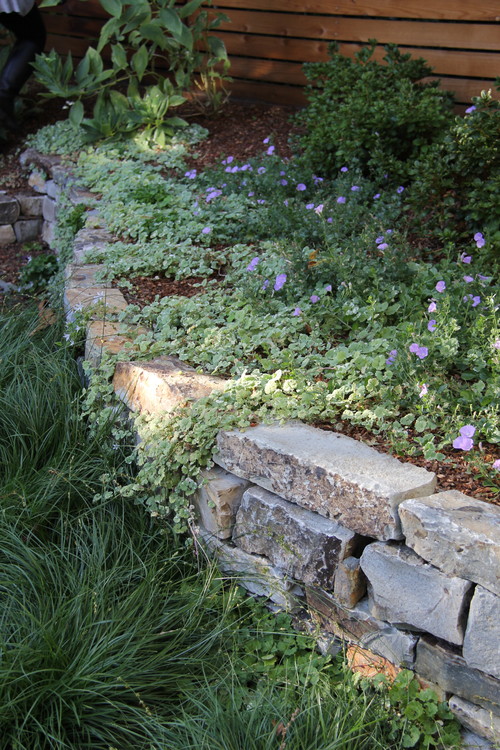
Roel_Meijer/iStock
No, it’s not a nickname for your stalker neighbor across the street. Creeping Charlie is a rapidly spreading weed vine with round, scalloped leaves and small, light-blue flowers. The weed also goes by several names, including ground ivy, hedge maid, gill-on-the-ground, and lawn ivy. No matter what you call it, it is one invasive plant.
“Of all the lawn weeds a homeowner will have to deal with, Creeping Charlie is probably the worst perennial weed,” says Richard Hentschel, an educator at University of Illinois Extension.
Why? It can take over your lawn and garden and make it difficult to control your landscape. As it grows, it can overtake and strangle other plants in its path. And it’s especially hard to control if it gets into your flower bed or lawn.
Photo by Cultivate
Throughout history, this low-growing weed has been used in everything from beer to salads to herbal medicines. But it’s no good in your garden. Controlling Creeping Charlie can be a real challenge for homeowners, but here are some ways to curtail the creep.
Method 1: Pull out the weeds by hand
This weed is one tough bugger to battle because it spreads through seeds, roots, and stems. And simply mowing Creeping Charlie only helps to spread the weed.
“To get rid of it naturally, one of the best ways to do it is to hand-pull after a heavy rain or after absolutely soaking the lawn. This makes it easier to pull out the entire structure of the plant, roots and all,” says Kevin Espiritu, founder of Epic Gardening.
Espiritu says an intensive hand-pulling session should take care of most of it, but advises keeping an eye on smaller plants popping up in the next few weeks. Yanking those out immediately should do the trick, he says. But make sure not to leave any behind, because one fragment can reroot and give rise to many more new plants.
“Having zero Creeping Charlie in a lawn or landscape is the dream of most homeowners,” he says.
Method 2: Keep a well-fed lawn
Creeping Charlie thrives in lawns that are poorly maintained, particularly in lawns that are thin and not very robust. So, bulk up that lawn! Experts say a well-maintained lawn can help fend off Creeping Charlie.
“When you’re trying to control Creeping Charlie, you need to prevent it from returning by either improving the density of the grass growing in that area or planting something else that can outcompete it,” says Kristin Krokowski, commercial horticulture educator at the University of Wisconsin–Madison Extension Waukesha County.
Experts suggest mowing regularly—to a height of 2 inches to 3.5 inches—and fertilizing, watering, and overseeding in the fall.
Method 3: Try soil solarization
The weed thrives in shade and high-moisture environments, such as under trees and shrubs. Soil solarization is a pesticide-free process that burns out soil-borne weeds using a concentrated amount of heat from the sun.
In the hot, sunny months, soil solarization can be used to control Creeping Charlie. Simply water the soil until it’s wet, place a clear plastic sheet (like a plastic dropcloth used by builders or painters) over the soil, bury the edges so it’s secure, and let it sit for at least four weeks. Then remove the dead weeds.
Method 4: Apply weed preventer
It is best to target Creeping Charlie in either the spring or the fall using a broadleaf herbicide containing triclopyr or dicamba—the chemicals can kill this weed but won’t harm your grass. Experts suggest fall as the perfect time, since the weeds are actively growing and the herbicide would reach the roots targeting the entire plant. However, Hentschel says the best time to treat your garden with herbicides depends on your climate, so he advises homeowners to contact their local agricultural extension office for more information.
And don’t bother with homemade DIY potions. One common remedy is to make a solution of Borax, but some experts advise against it because Borax can infiltrate the soil and hurt your lawn or other plants. Unless you use scientific precision in mixing and applying the solution, you can end up with a case of boron toxicity in your soil.
The post Whack That Weed! How To Keep Creeping Charlie Out of Your Garden appeared first on Real Estate News & Insights | realtor.com®.

No comments:
Post a Comment